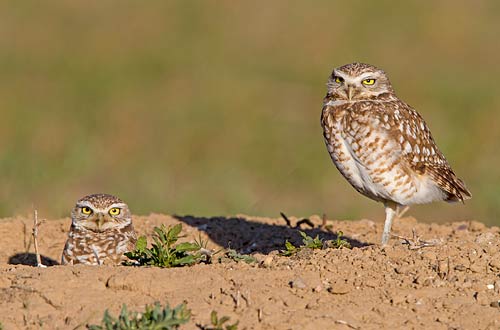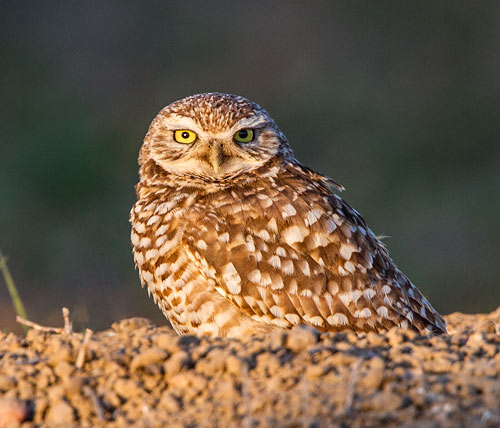Photo Gallery and Blog 2015
Bald Eagles
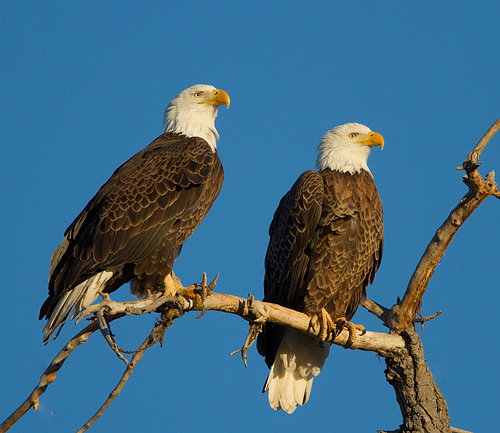
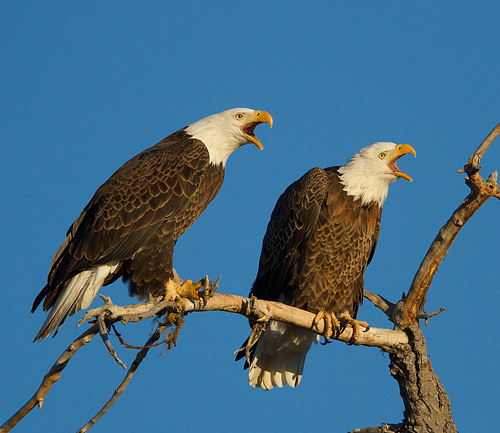
There is a pair of bald eagles that is spending the winter in the area.
Occasionally I see one perched high in a tree above a frozen pond, watching the geese.
My random eagle sightings usually happen on gloomy, gray days or when I'm on a bike ride and completely unprepared to photograph anything.
This time I was lucky enough to find both eagles in the same tree, late on a sunny afternoon.
It was like they were posing to be on a dollar bill or something.
With that characteristic stern expression, you never know when they are smiling.
Then they spotted something far away with their eagle eyes and they squawked at it.
Screech Owls
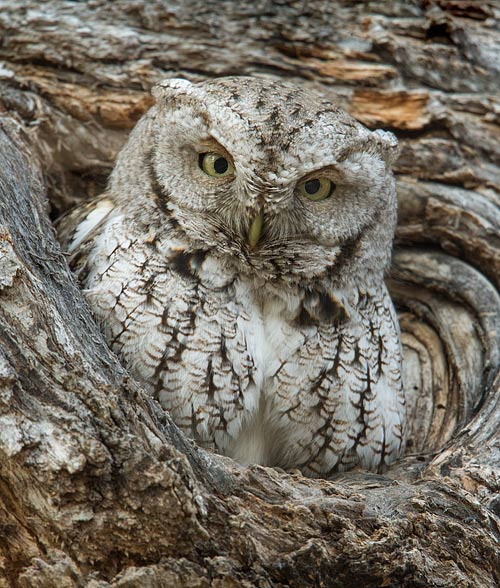
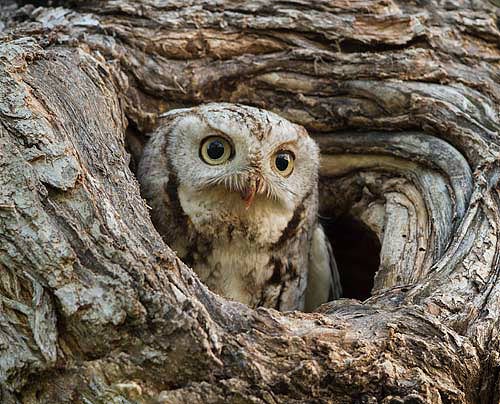
The little screech owls are still living and nesting in the same tree hole as last year.
All day one owl sits there with its eyes closed, fluffed up to fill the hole, looking like so much tree bark.
At dusk the owls wake up for their nocturnal activities.
Usually I see the owl in the left photo which I believe is the female.
The other one (in the photo above) flew in with some food and promptly flew back out.
Judging from its smaller size, it must be the male.
(The size of the owl's pupils indicates how dark it is by then, which makes photography challenging.)
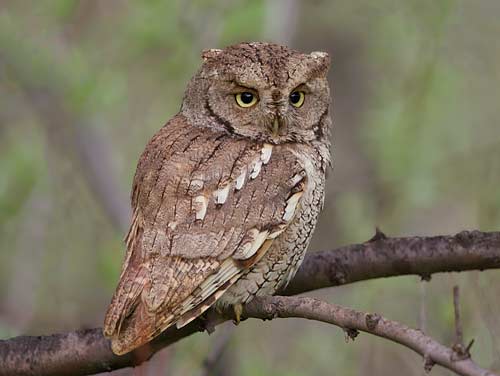
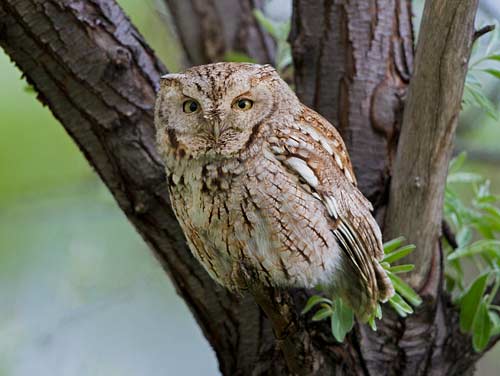
At dusk, sometimes the owl will fly out of the nest hole to begin hunting, and if I'm lucky, it will land in a photogenic spot.
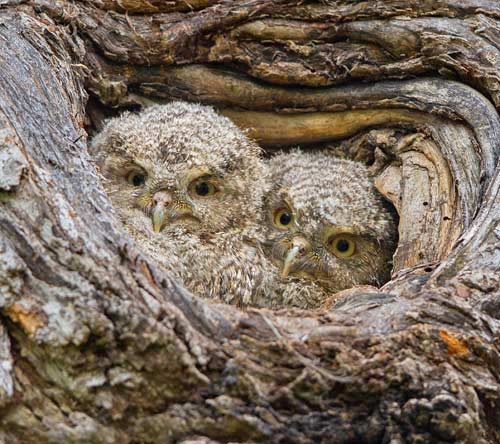
By mid May, owlets are peeking from the hole while Mom is away
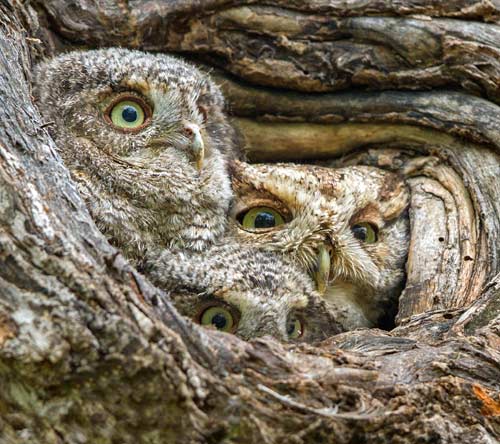
Let's see how many owls will fit in the hole all at once
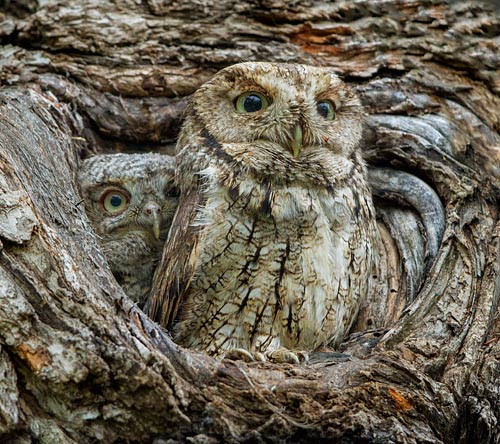
The owlets get bigger and more impatient every day
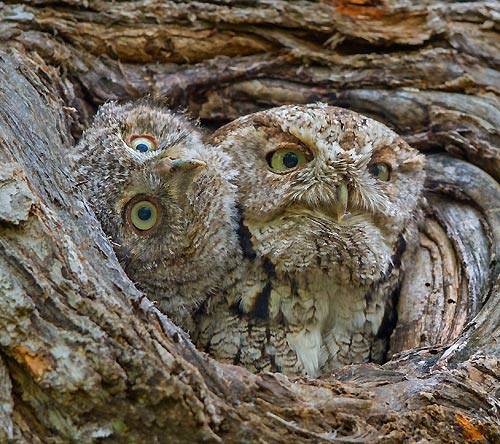
"C'mon Mom, let me see!"
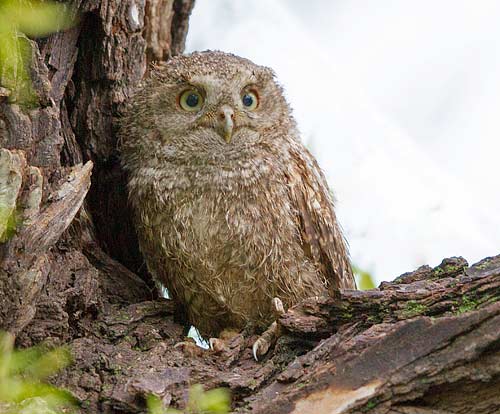
Late one evening the first owlet jumped out of the hole and walked around on the branch, followed shortly by the second one

The next morning, two owlets were sitting calmly on a branch in a different tree, well obscured by twigs and branches, while the other two remained in the nest hole.
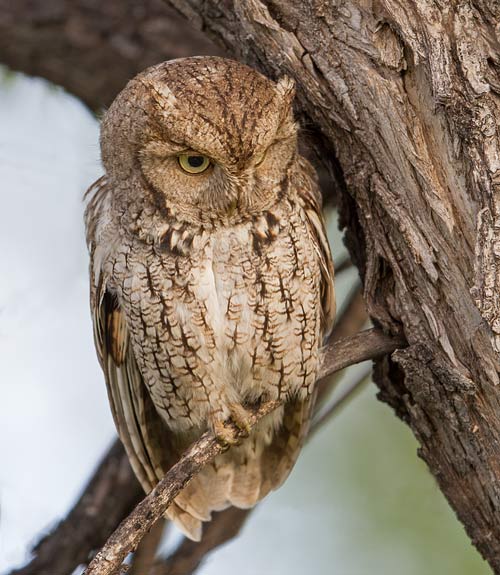
One evening, the adult owl perched on this low branch and intently stared at the ground for a long time.
Suddenly she dove into the tall grass and disappeared for a few seconds, then flew up carrying a vole.

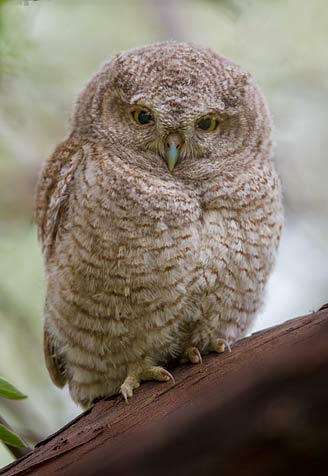
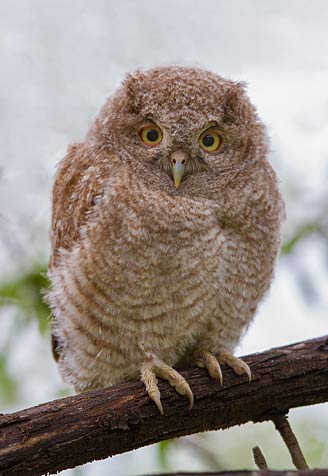
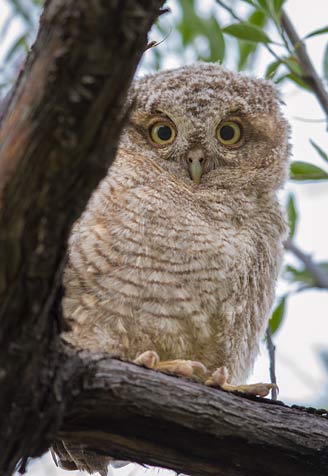
Just one week after the first owlet left the nest, all four have moved to upper branches of nearby trees
and are flying short distances.
At first they were wide awake all day but now they snooze during the day and wake up at dusk.
Sometimes I can get a clear view of one through the clutter of twigs and leaves.
One evening, well after dusk I was about to leave when the adult owl flew down and landed
on a nice clear branch barely four feet away from me as if to say "I'm ready for my closeup."
I had to back up quite a bit just to get her in the frame.
It was nearly dark but with a long exposure and crossed fingers, I got a sweet photo.
One evening, well after dusk I was about to leave when the adult owl flew down and landed
on a nice clear branch barely four feet away from me as if to say "I'm ready for my closeup."
I had to back up quite a bit just to get her in the frame.
It was nearly dark but with a long exposure and crossed fingers, I got a sweet photo.
Burrowing Owls
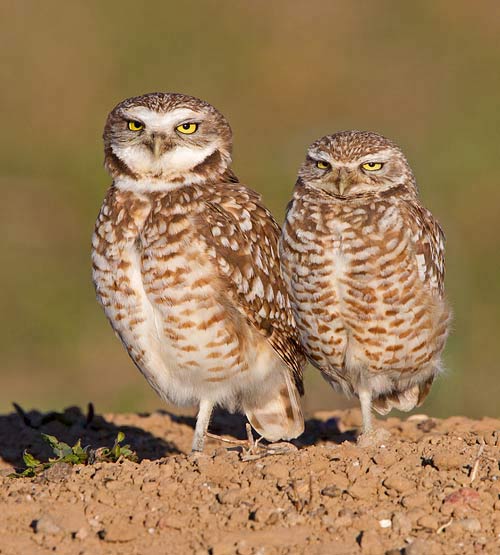
Burrowing owls are fun to watch.
They stand on the dirt mound around an old prairie dog hole, often on one leg, look all around,
watch other birds and the prairie dogs, snooze, and sometimes bob their heads up and down.
Unlike most owls, they are active in the daytime.
I took all these photos through my open passenger window, using my car as a blind.
They don't pay much attention to me and rarely even look at me.
It just seems that way because that's when I take the photos.
I started watching these owls in mid April.
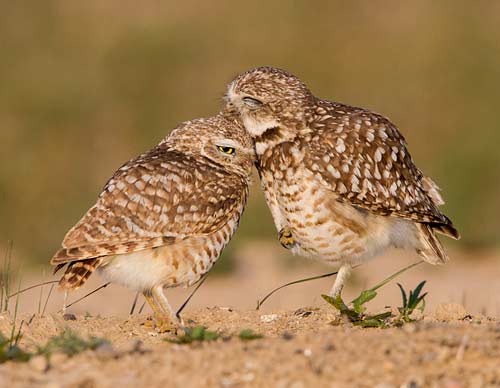
"I've got this darn itch on top of my head, yeah, right there, ooooo..."
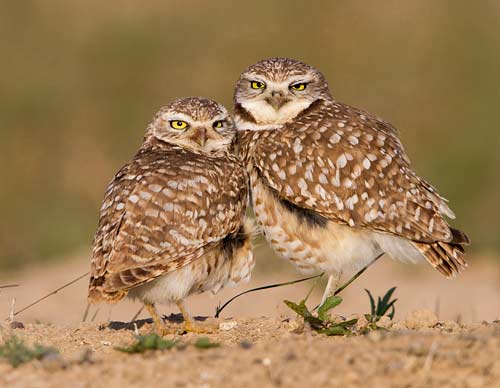
"Thanks, that's owl better!"
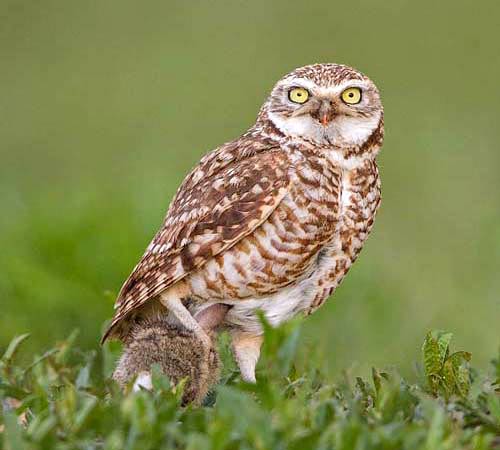
"Hey dear, we're having some bunny for dinner."
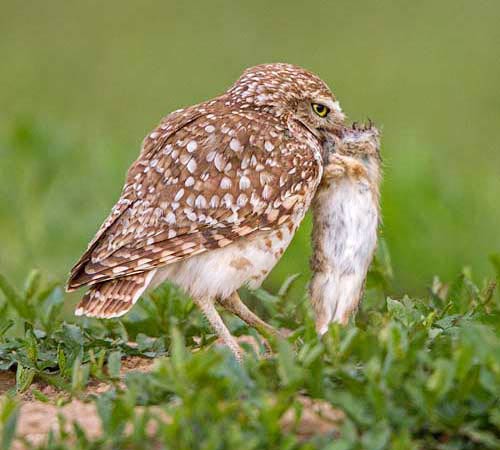
In spite of having four rabbit's feet, this baby bunny wasn't very lucky.
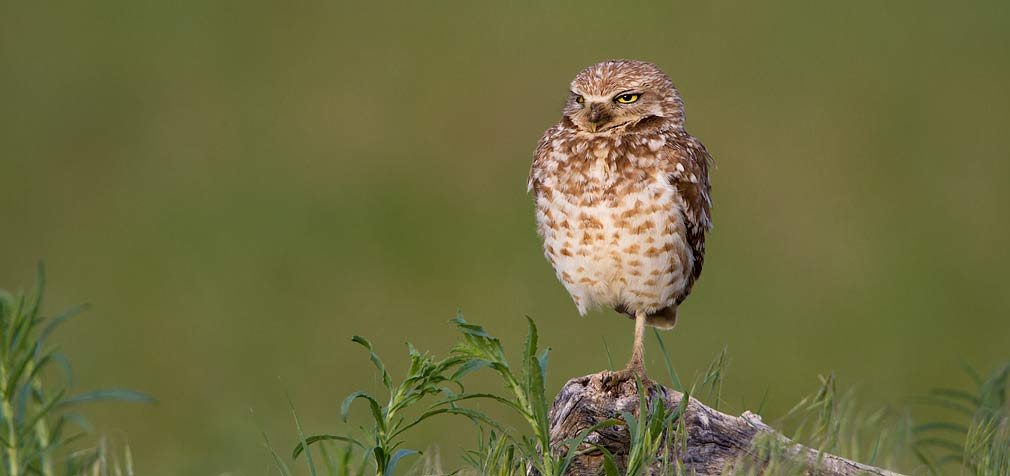
Sometimes the owl just stands there, surveying the prairie, looking wise, and wondering where its other leg went.
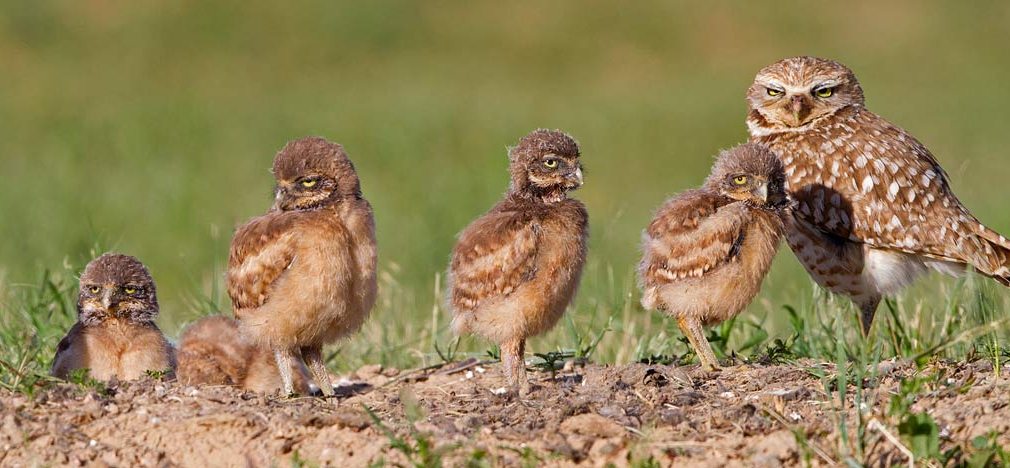
The new owlets appeared in early June, all fuzzy with stubby wings and feather quills.
It's hard to know exactly how many because they are constantly moving around and some are still down in the hole.
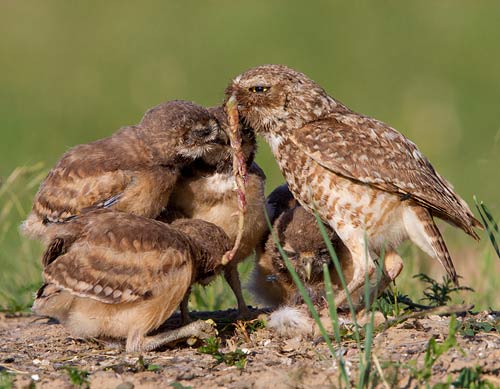
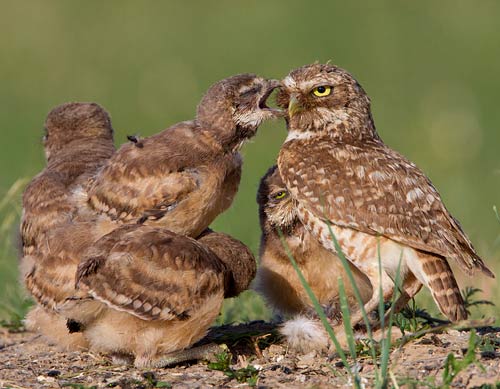
Dinner time! The parent has some fresh varmint in its talon and pulls off pieces to feed to the chicks. They scream for more.
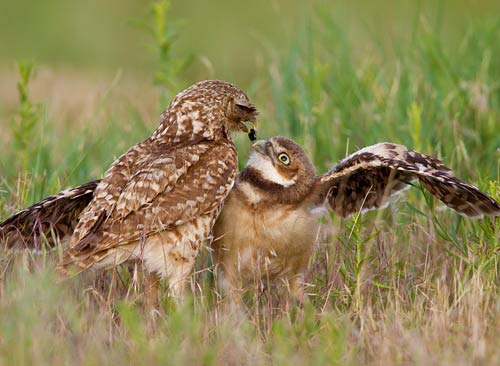
This chick is excited to get a nice tasty beetle.
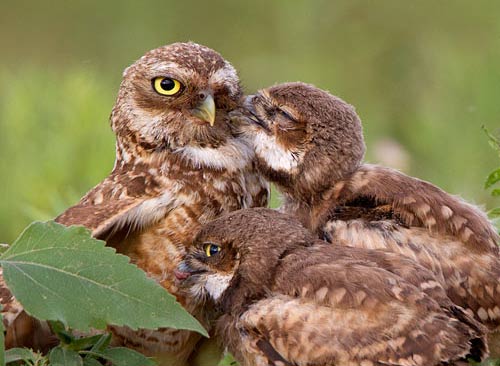
The chicks bite the adult's face in gratitude. Gee, thanks.
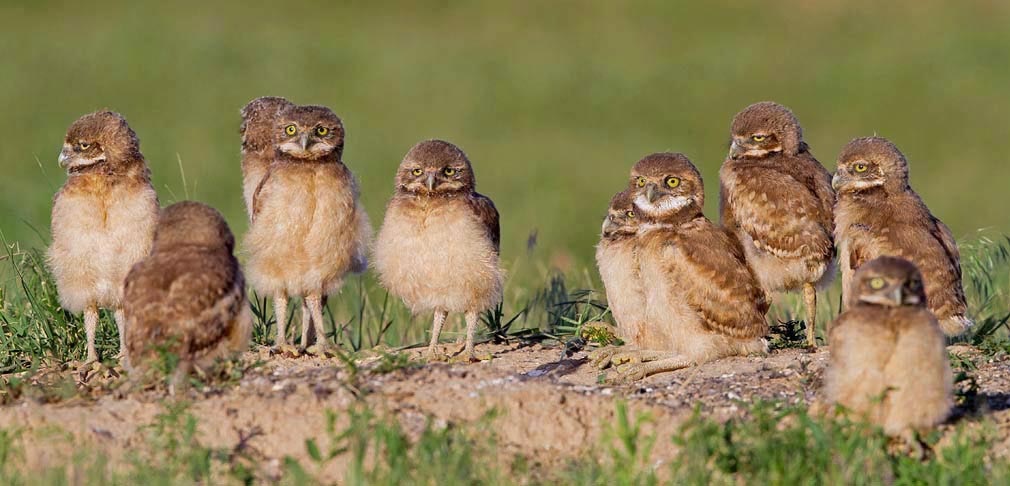
The owlets grow fast.
Just four days since the previous group photo, they have lost that fuzz on their heads and are almost as tall as the adult.
There are ten owlets in this brood.
It's tough to get a decent family photo since there are always a few goofballs looking the wrong direction.
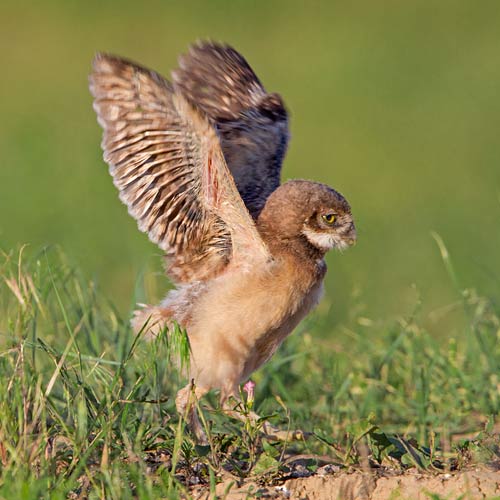
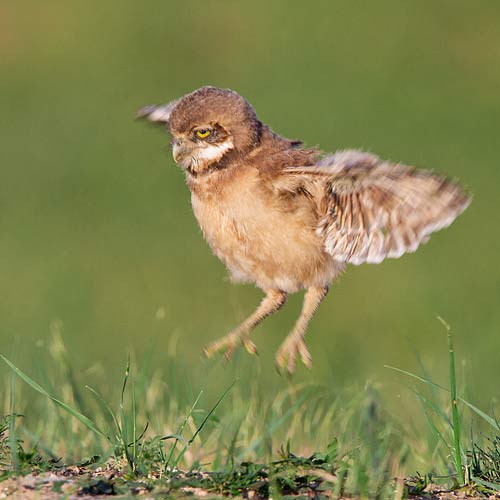
Occasionally an owlet will hop around and flutter its little wings.
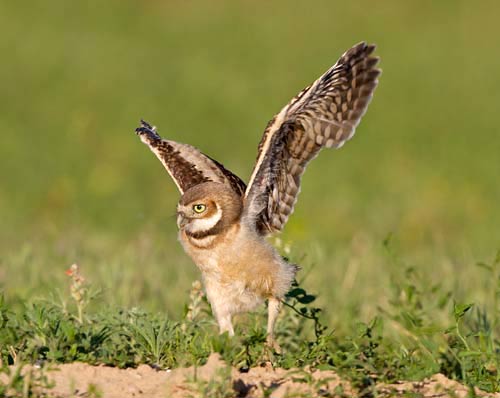
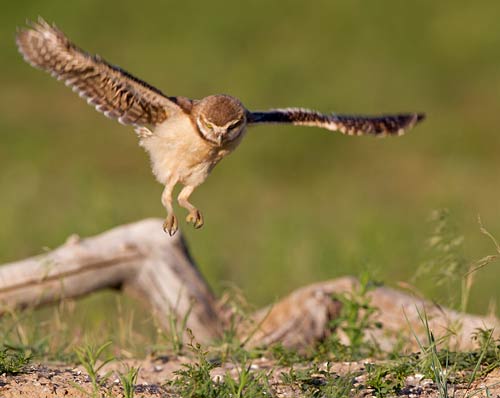
After a week, their feathers have grown.
They make test flights by running across the ground and flapping. Sure enough, it works.
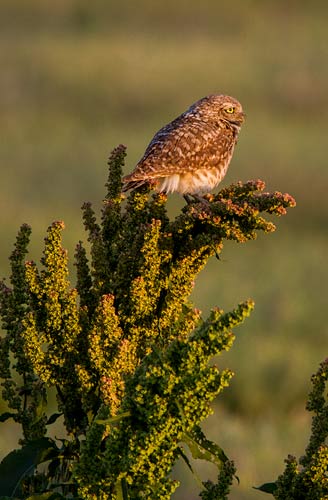
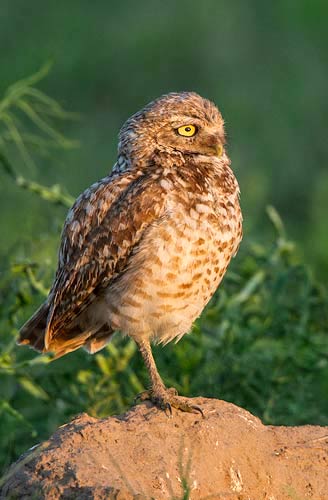
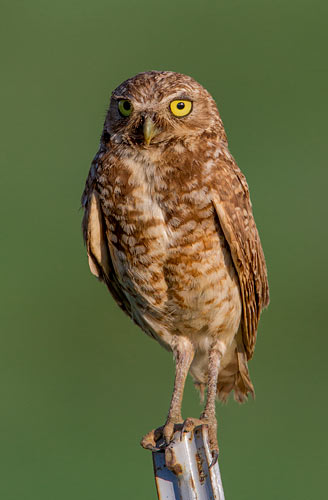
The parents hunt for food to feed their brood by sitting on various perches and watching.
Ten chicks are a lot of beaks to feed.
They often pounce on a beetle on the ground or sometimes snag one in mid-air.
Then they fly back to their family of owlets who all come running.
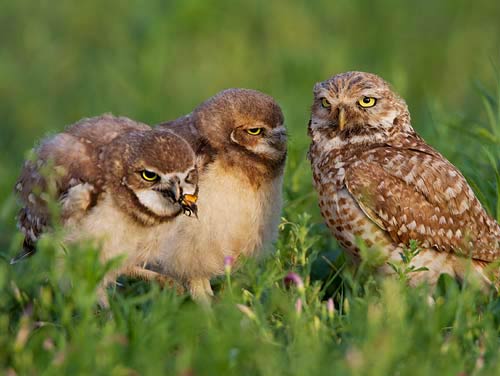
This chick got a big juicy beetle.
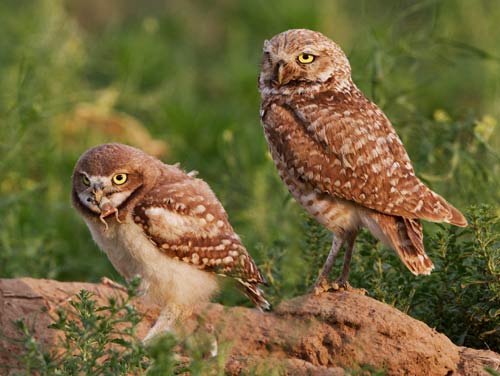
This chick got some sort of amphibian-looking thing.
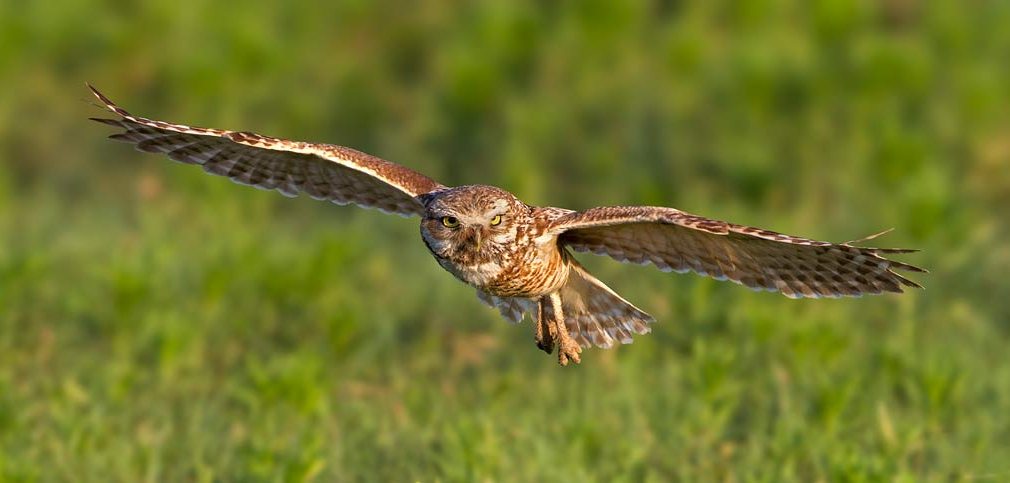
One of the parents flying back to resume hunting.
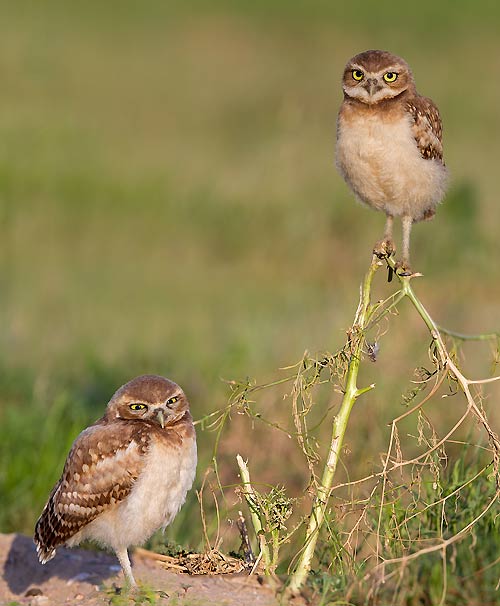
Besides flying, they have learned how to balance too.
Two weeks ago I watched one owlet trying to stand on a stick and repeatedly falling off.
It looks like this one has figured it out now.
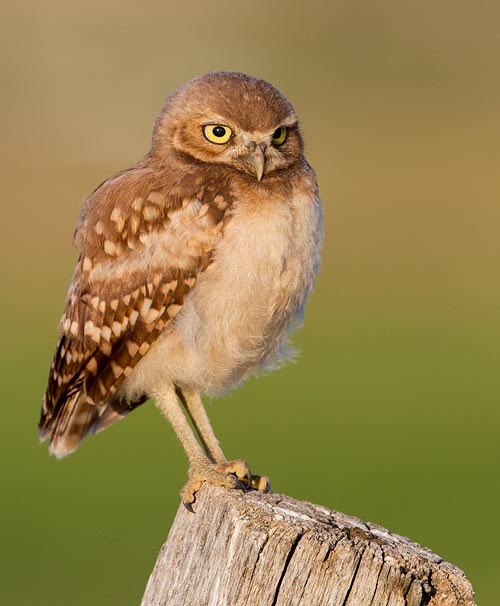
Practice has made perfect and owlets are flying proficiently now.
They land on perches with no problem and are happy to pose for portrait photos.
They can catch their own bugs.
They are growing up.
Great Horned Owlets

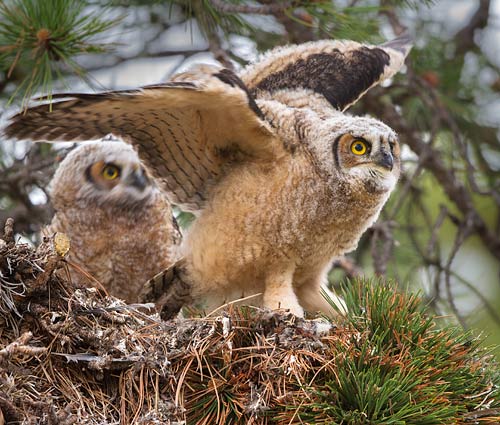
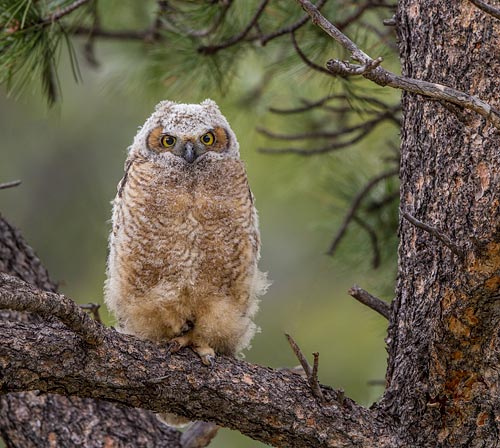
It's early June and this pair of great horned owlets is nearly ready to leave their nest in Rocky Mountain National Park.
They are still somewhat fuzzy but their flight feathers have been growing.
One owlet was testing its new wings by making tentative flights back and forth across the nest.
The next morning one owlet was out of the nest, sitting on a nearby branch.
They will be flying before long.
(You can probably tell by now--I like owls.)
Wild Turkeys


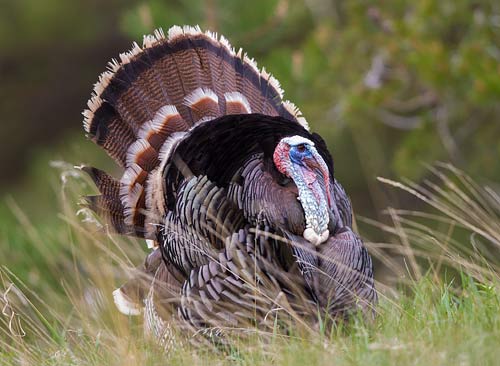
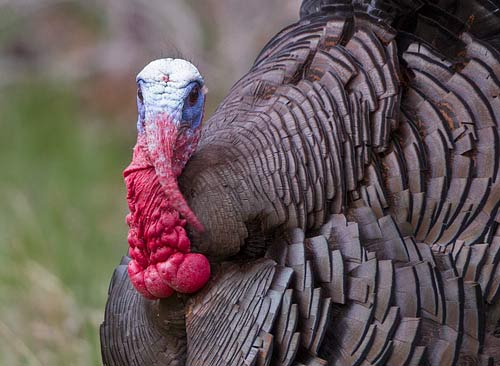
The turkey mating season is in full swing.
The tom turkey puffs up and fans his tail feathers, then struts around, showing off for the hens.
Sometimes he makes a loud and rapid "gobble gobble gobble" sound.
It must take a lot of strutting and gobbling because these turkeys are really ugly.
Cedar Waxwing

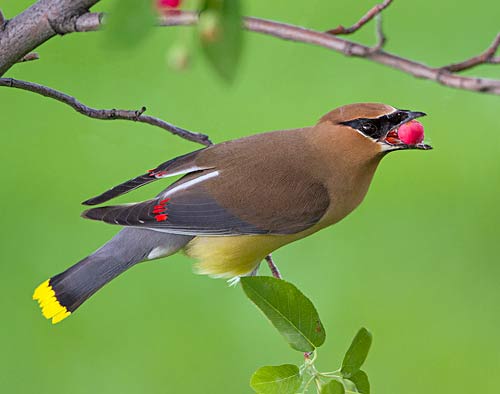
In mid June, my backyard serviceberry tree is covered with a copious bounty of berries and becomes a magnet for birds.
Mostly it is rife with rocking robins and a few finches.
I learned a lesson last year and watched my trembling tree for any surprising species.
Sure enough, amongst the fluttering foliage I spotted a wandering waxwing.
It was so simple to sit silently on my deck that evening and await its arrival.
Mountain Bluebird
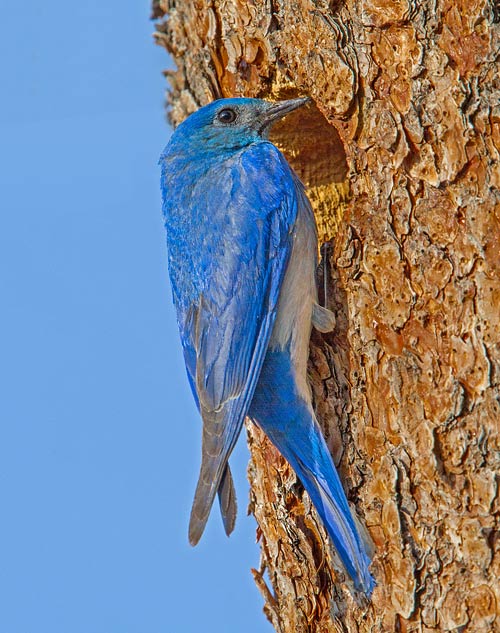
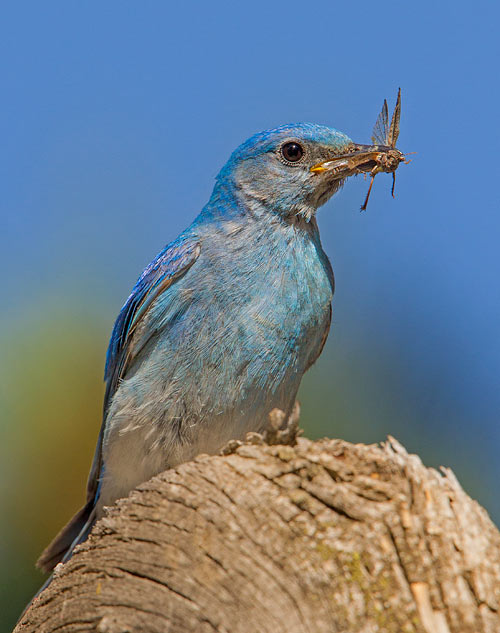
I hadn't been able to find a bluebird in the park since 2011 so I was glad to see them again.
White Tailed Ptarmigan
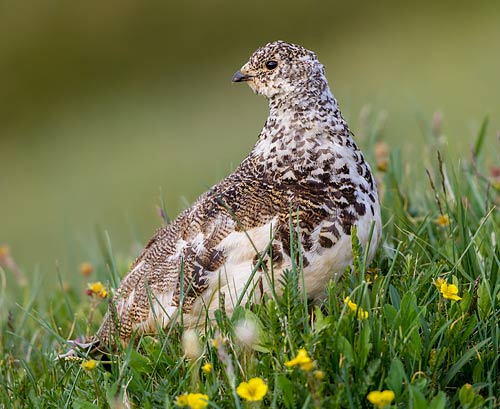
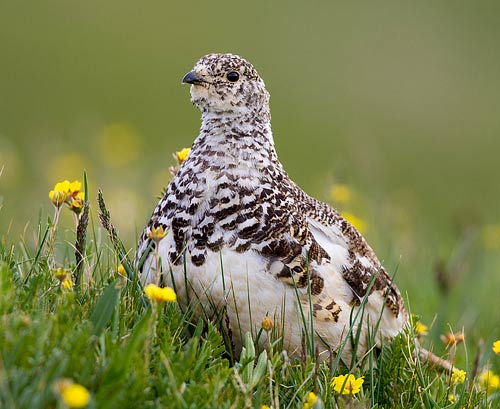
Ptarmigan live year round up high on the tundra, the only bird that does so.
In the winter, they get white feathers to blend in with the snow.
They aren't very skittish and their camouflage is so good that you can nearly step on one without realizing it.
I have been to the designated spot in RMNP for ptarmigan many times but rarely have I seen any.
I carefully scanned the tundra with binoculars and then found one just a few feet in front of me.
It seemed happy to pose for some photos as it munched on alpine avens.
Elk Rut
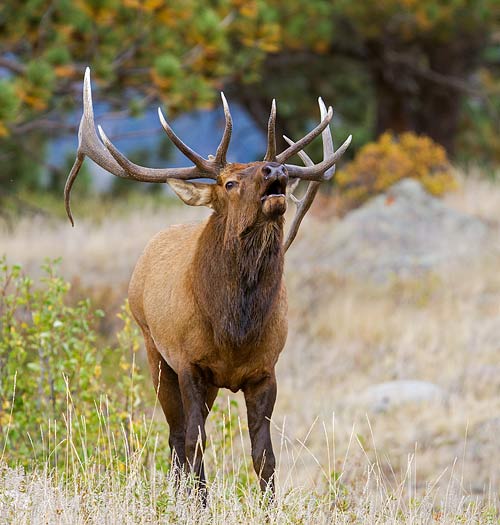
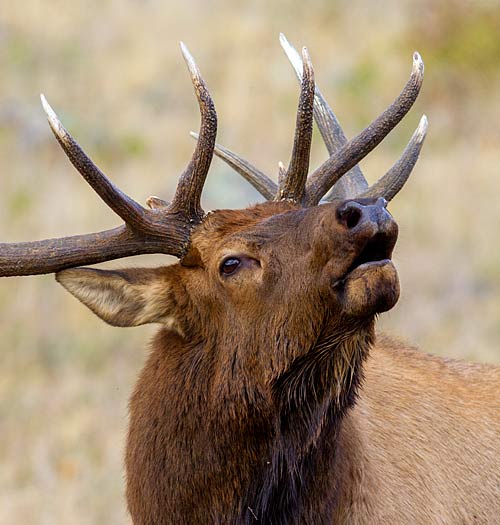
In late September the bull elk are well into the rut. The biggest bulls collect harems of cows and bugle at each other. It's really loud when one is close.
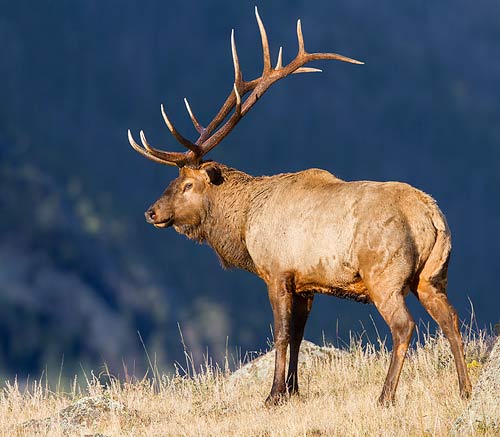
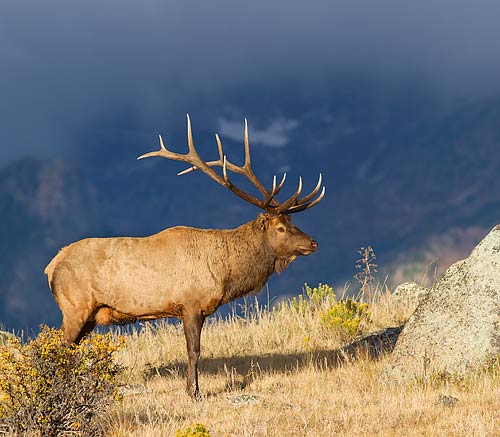
It was gloomy and raining at sunrise but then a shaft of light shone through the clouds just as this big bull returned from chasing a smaller bull over this hill.
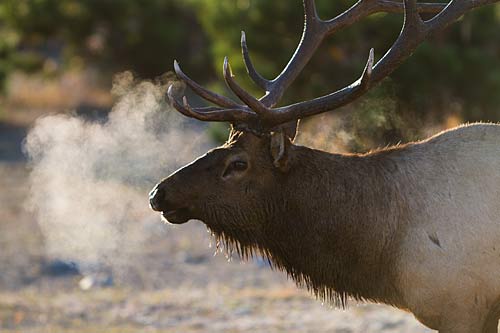
Puffs of breath are visible in the cold morning air.
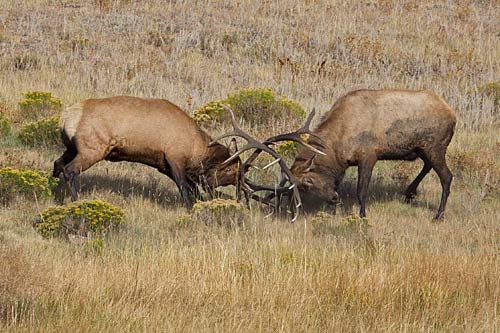
Sometimes equal-sized bulls engage antlers and fight.
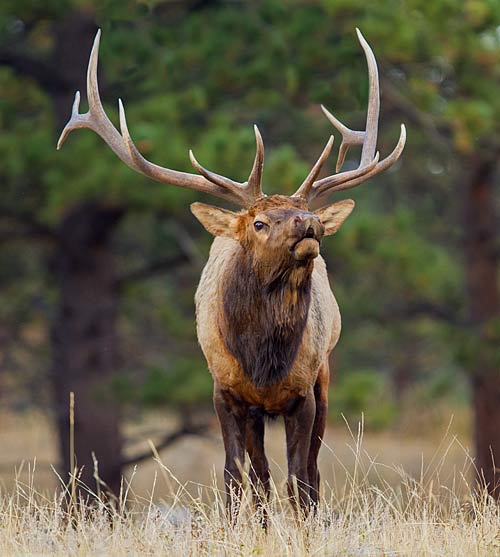
At the peak of the rut, bulls bugle constantly.
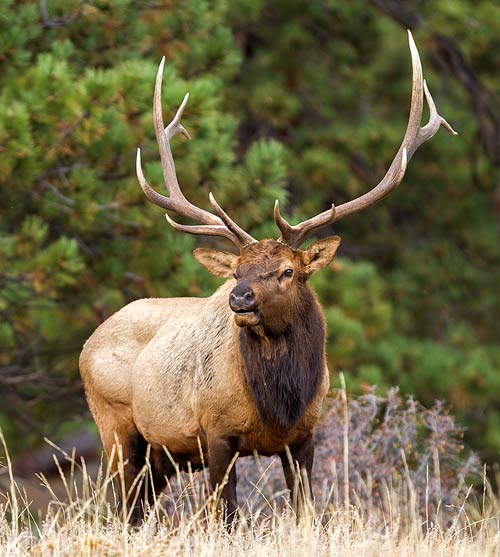
It's pretty clear what is on his mind.
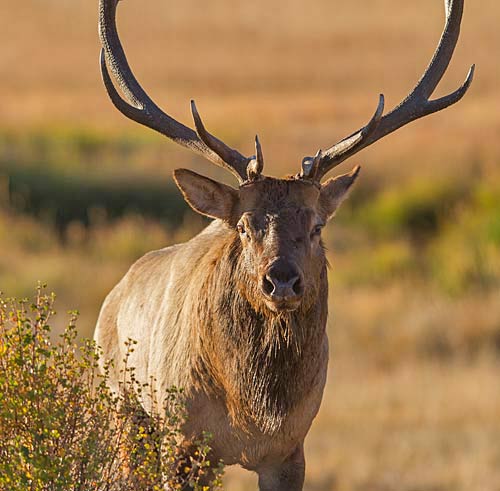
Better get out of the way—this guy is coming through.
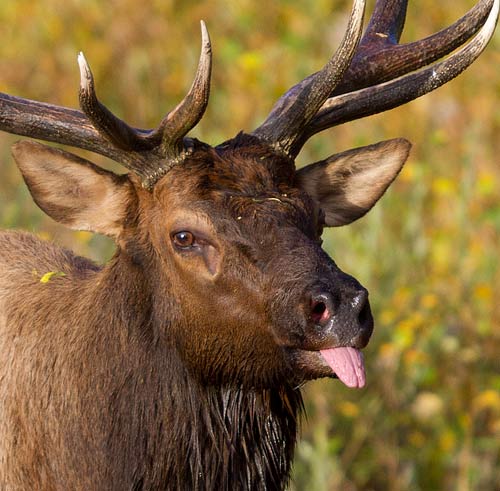
This is what the elk think of all the tourists clustered around.


















